We get a first look at the Fisker Ocean, the EV with solar panels and a rotating display
There's plenty of tech for the price
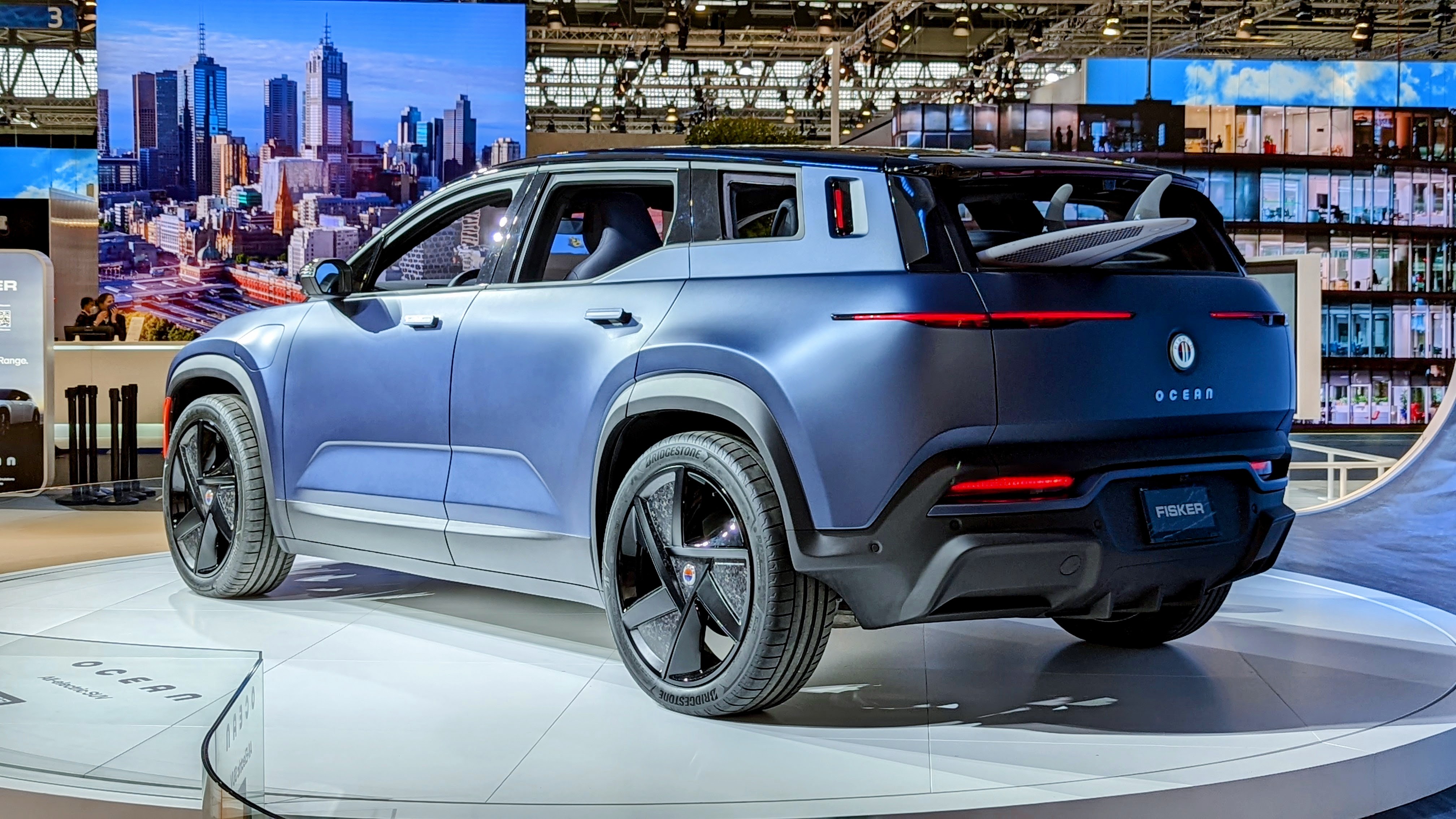
At MWC 2022 we got the chance to check out a prototype version of the Fisker Ocean battery electric SUV during its European debut.
This EV, which we first saw when it was unveiled at CES in 2020, is the latest venture of legendary car designer Henrik Fisker.
While Fisker Inc. is based in Los Angeles, California, the Ocean will be manufactured by Magna in Graz, Austria, with the first deliveries planned for later this year.
It packs worthy specs for the price
The Fisker Ocean will be available in three trims. First there's the Ocean Sport ($37,499 / £34,990), with an estimated range of 250mi (EPA) / 440km (WLTP), a 0-60mph time of 6.9s, and a 275HP (205kW) single motor (FWD) drivetrain.
Second, the Ocean Ultra ($49,999 / £48,900) offers an estimated range of 340mi (EPA) / 610km (WLTP) and a 0-60mph time of 3.9s using a 540HP (400kW) dual motor (AWD) drivetrain.
Finally, there's the Ocean Extreme and launch edition Ocean One ($68,999 / £59,900). Both deliver an estimated range of 350mi (EPA) / 630km (WLTP), and a 0-60mph time of 3.6s thanks to a 550HP (410kW) dual motor (AWD) drivetrain.
The Ocean will use lithium iron phosphate (LFP) batteries on the Sport trim and nickel manganese cobalt (NMC) batteries on the other trims – both supplied by CATL. Exact capacities are unknown.
Get daily insight, inspiration and deals in your inbox
Sign up for breaking news, reviews, opinion, top tech deals, and more.
As you'd expect from a modern EV, the Ocean will support 250kW or faster DC fast charging, but it will also include vehicle-to-load (V2L) functionality similar to what's offered by both the Ford F150 Lightning (power a home in an emergency) and the Hyundai Ioniq 5 (power appliances and charge other EVs).
With the specs out of the way, let's take a look at the Ocean's design, features, and tech – and share our first impressions.
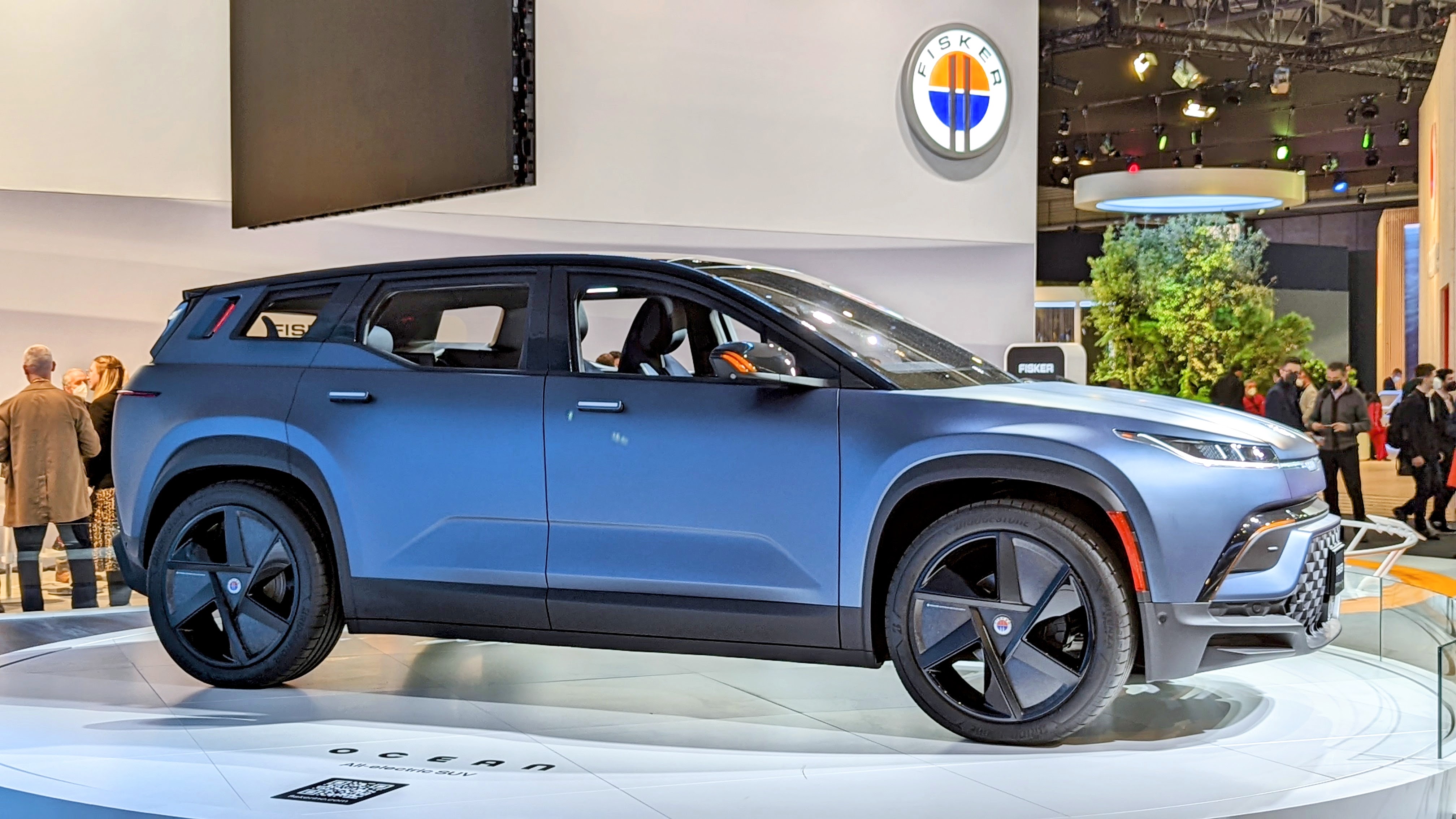
It charges using the sun
The Ocean's exterior is pretty sleek for an SUV, and the design is modern and well suited to an EV. It's a big vehicle, and the large 22-inch wheels give it concept car-like proportions that stand out.
We see some Land Rover Evoque / Velar influence in the overall shape – especially in the thin headlight and LED tail lamps. The lighted Ocean branding in the front and back is a nice touch, and so is the shape of the turn-signal repeaters in the side mirrors.
We also like the kink in the rear door and the additional LED lights in the D pillars. Another standout feature is the California Mode, available in the Ultra and Extreme / One trims, which lowers all the Ocean's windows at the push of a button – including Doggie Power Windows in the D pillars and in the tailgate, plus a power glass roof -- for an open, almost Jeep- or Bronco-like experience, without the fuss of having to remove body panels.
Speaking of the power glass roof, it incorporates solar panels on the Extreme / One trims, which are said to provide 1,500-2,000 miles (2,400-3,200 km) of additional range per year, depending on climate.
Inside, the Ocean is just as sleek and modern as it is outside, and Fisker makes extensive use of recycled materials, including recycled plastic bottles. Overall, the interior design reminds us of the Ford Mustang Mach-E and the Polestar 2.
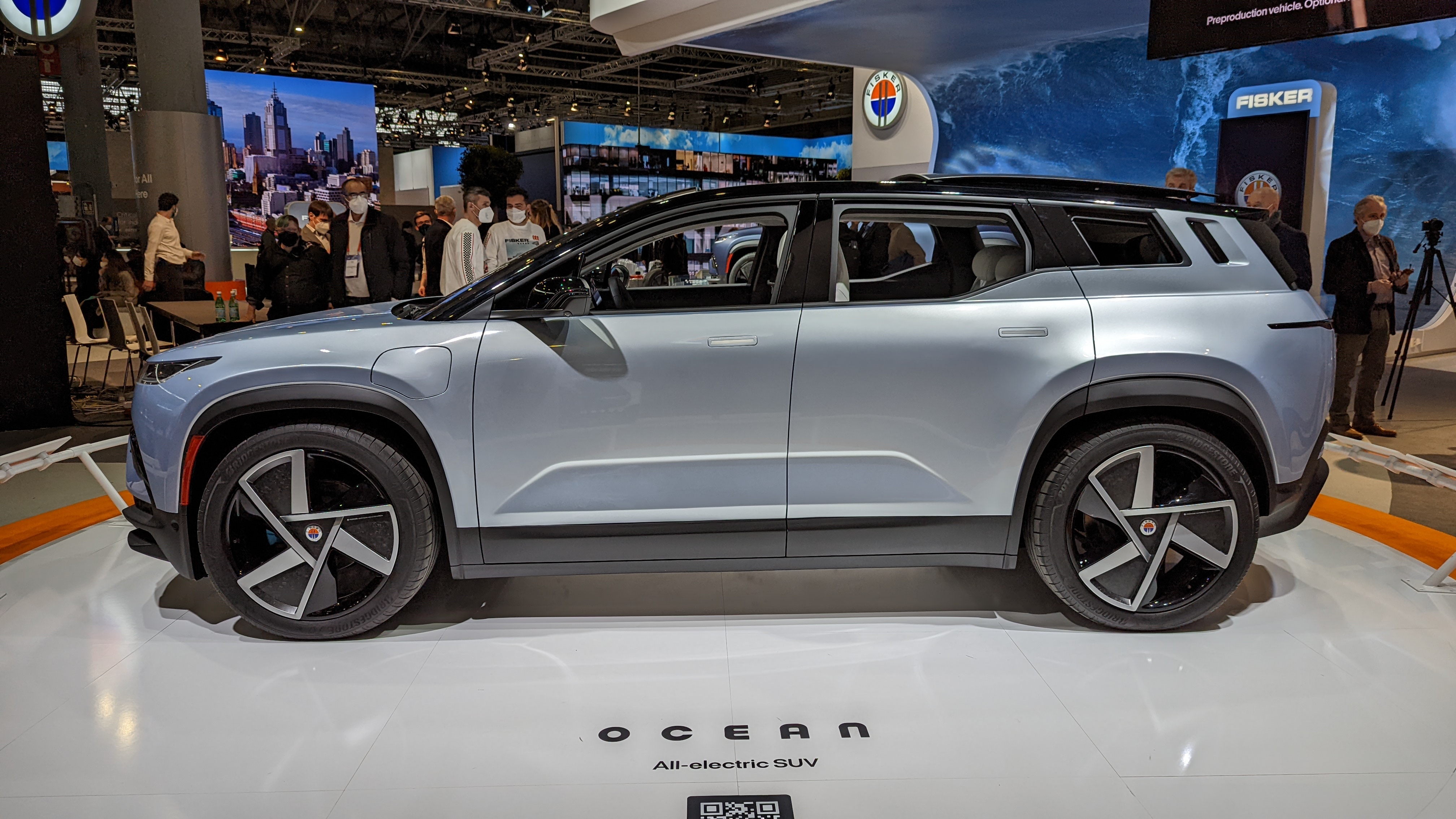


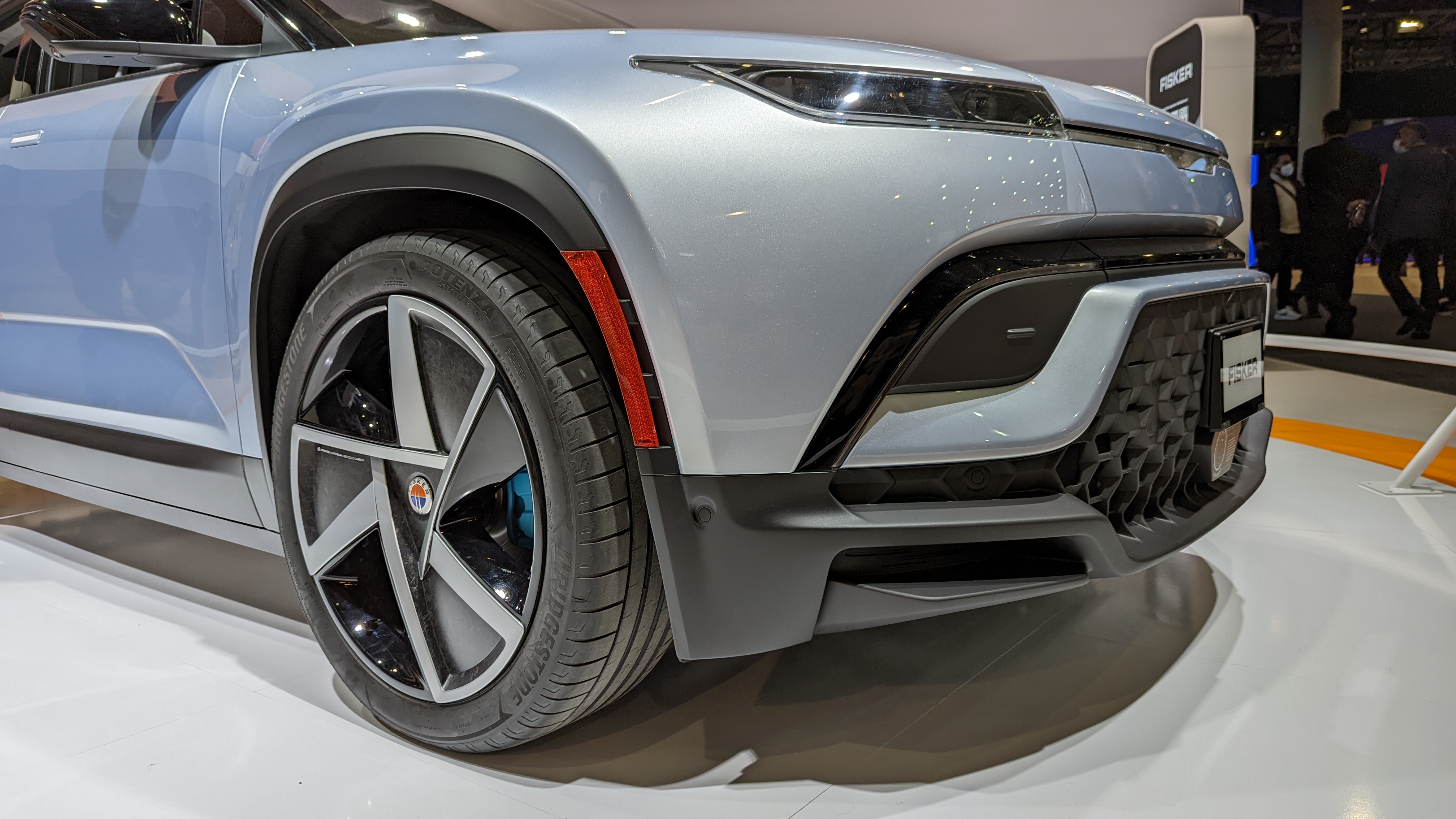
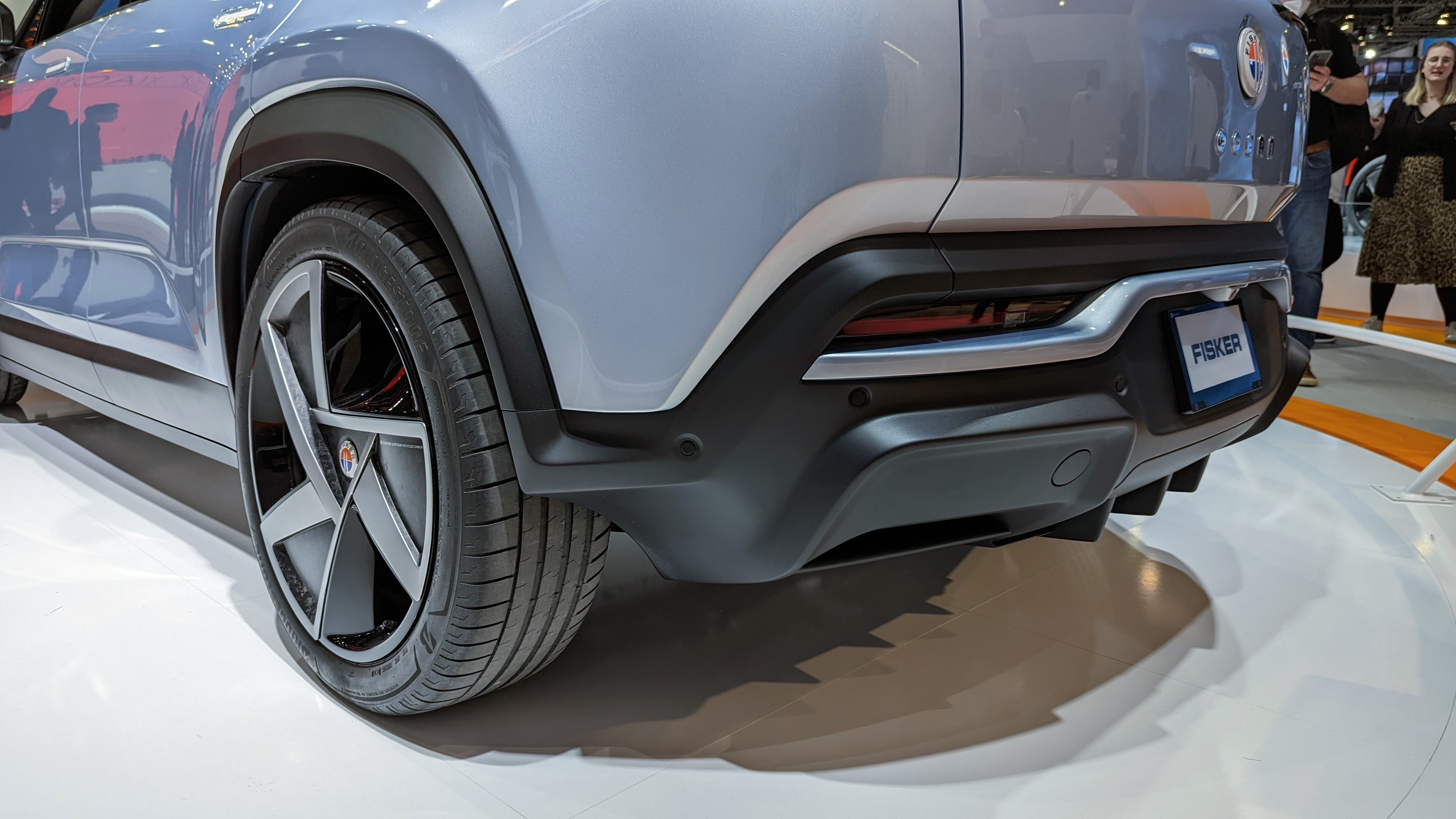
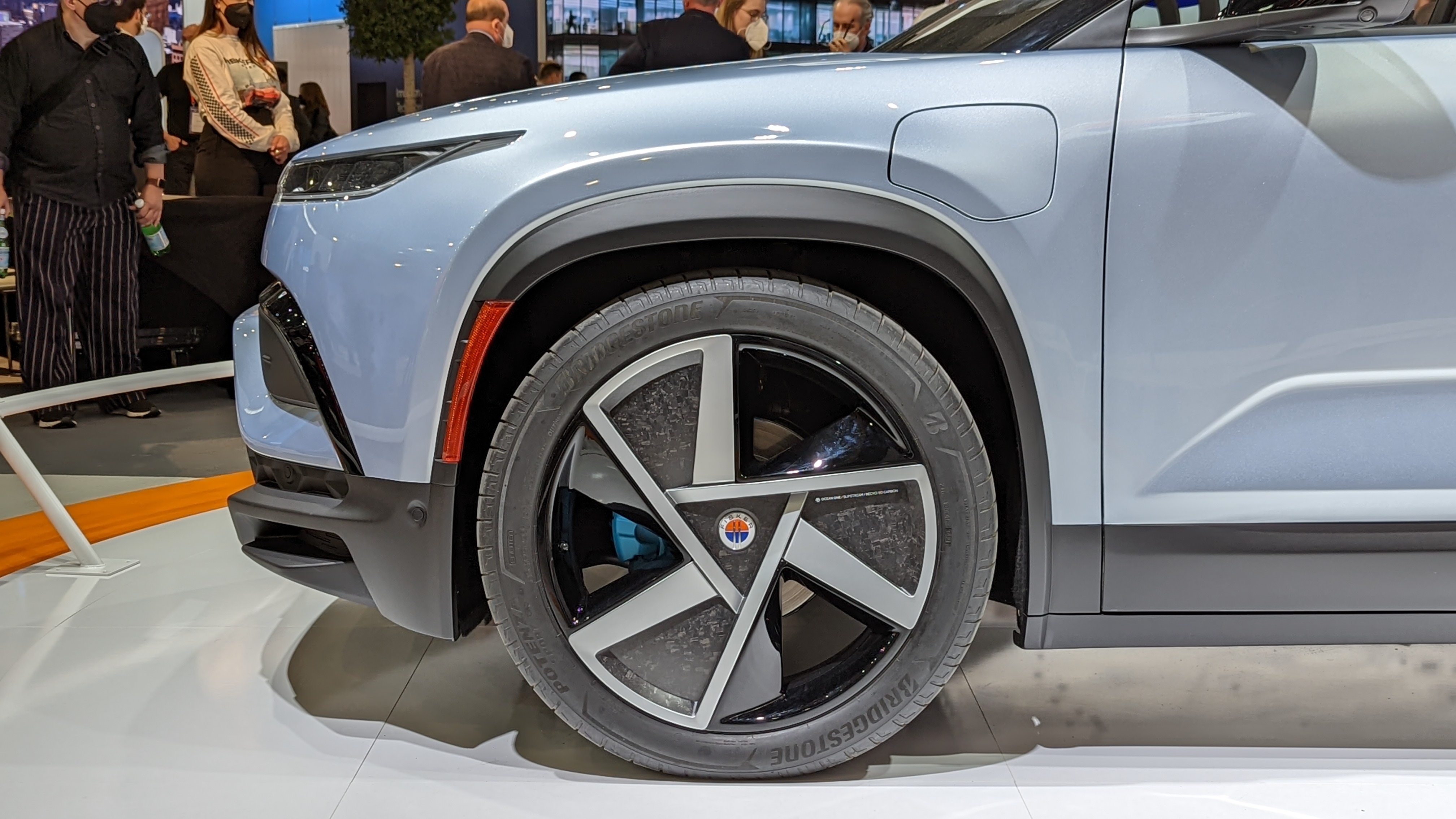
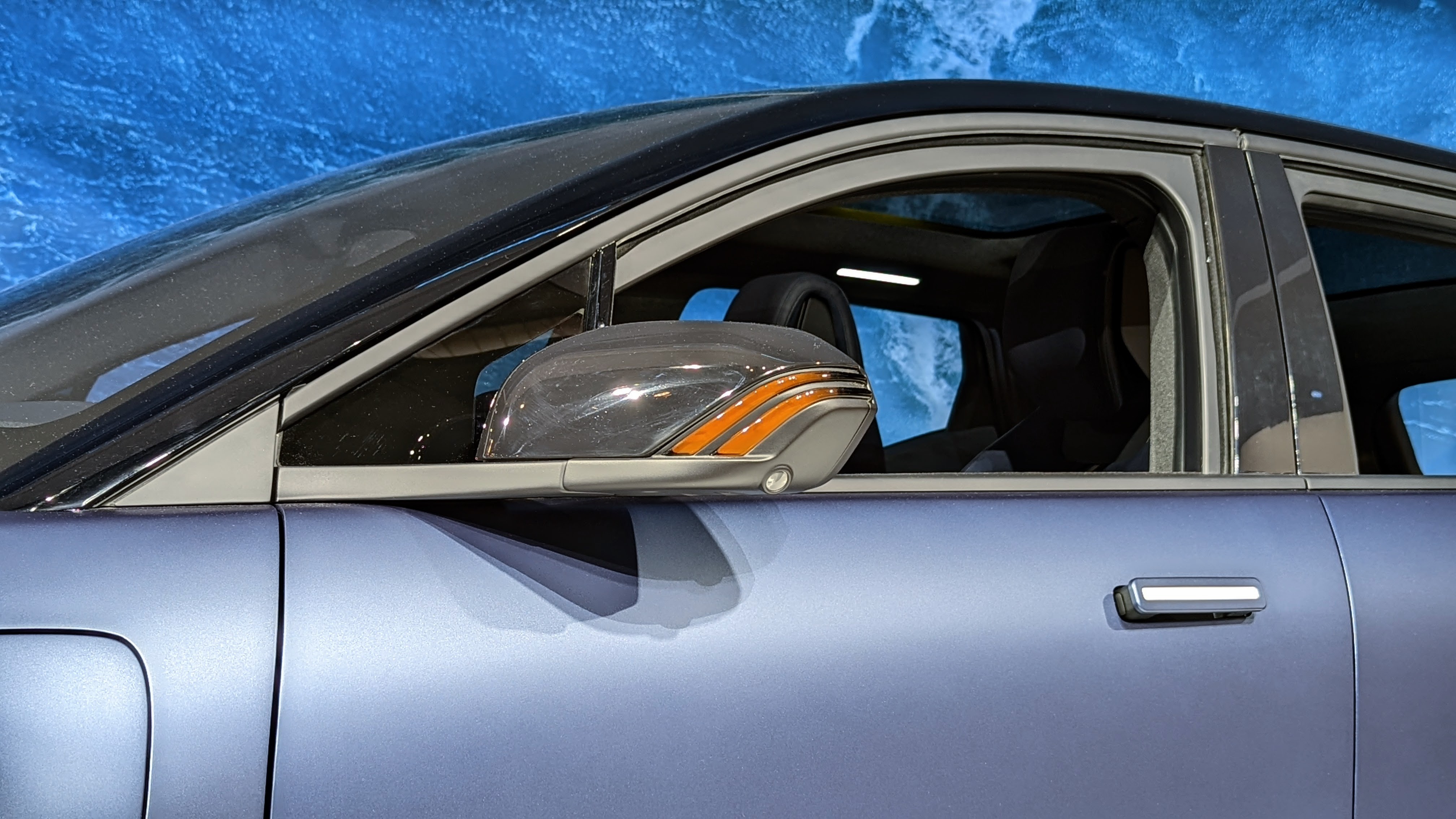
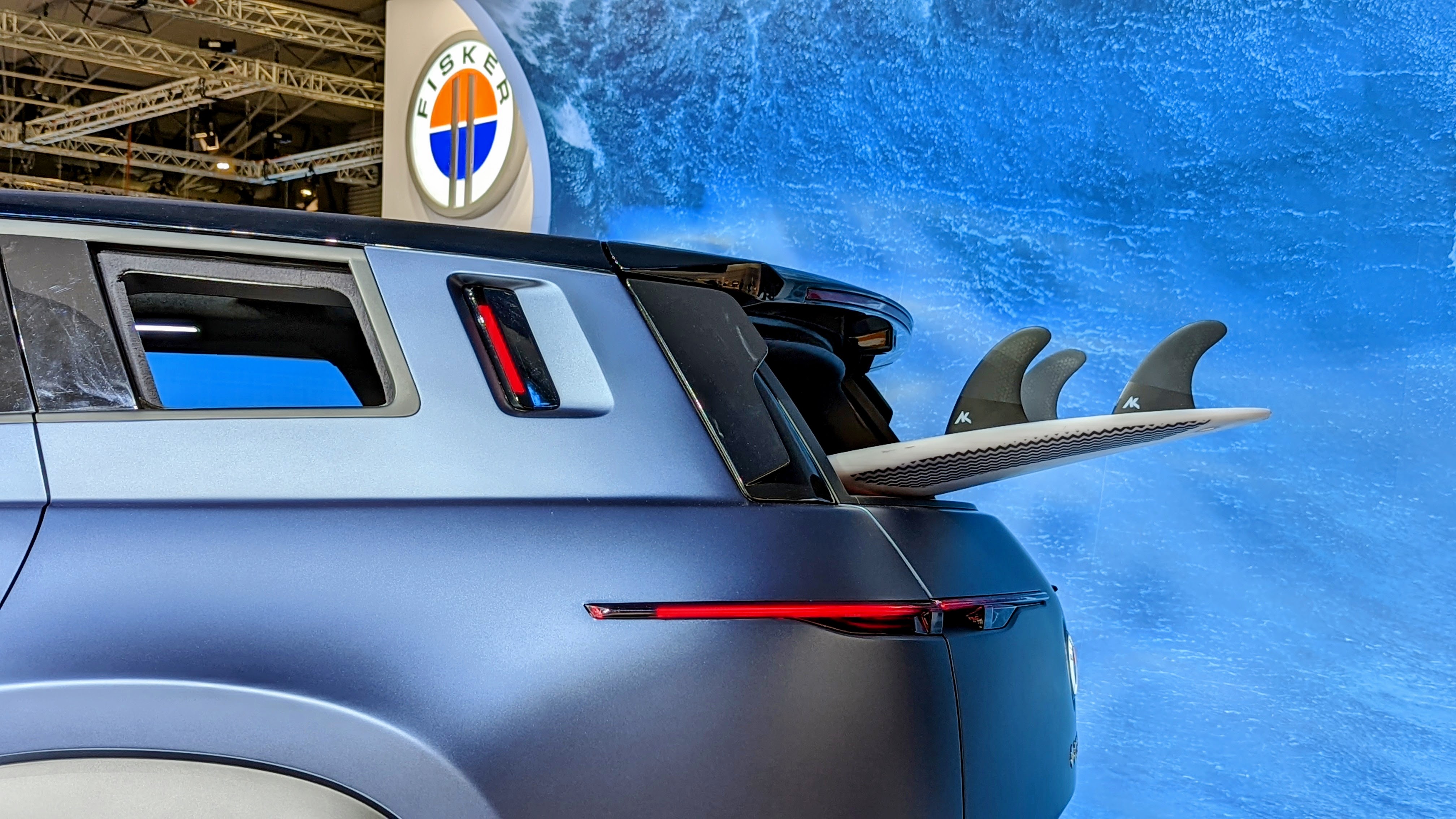
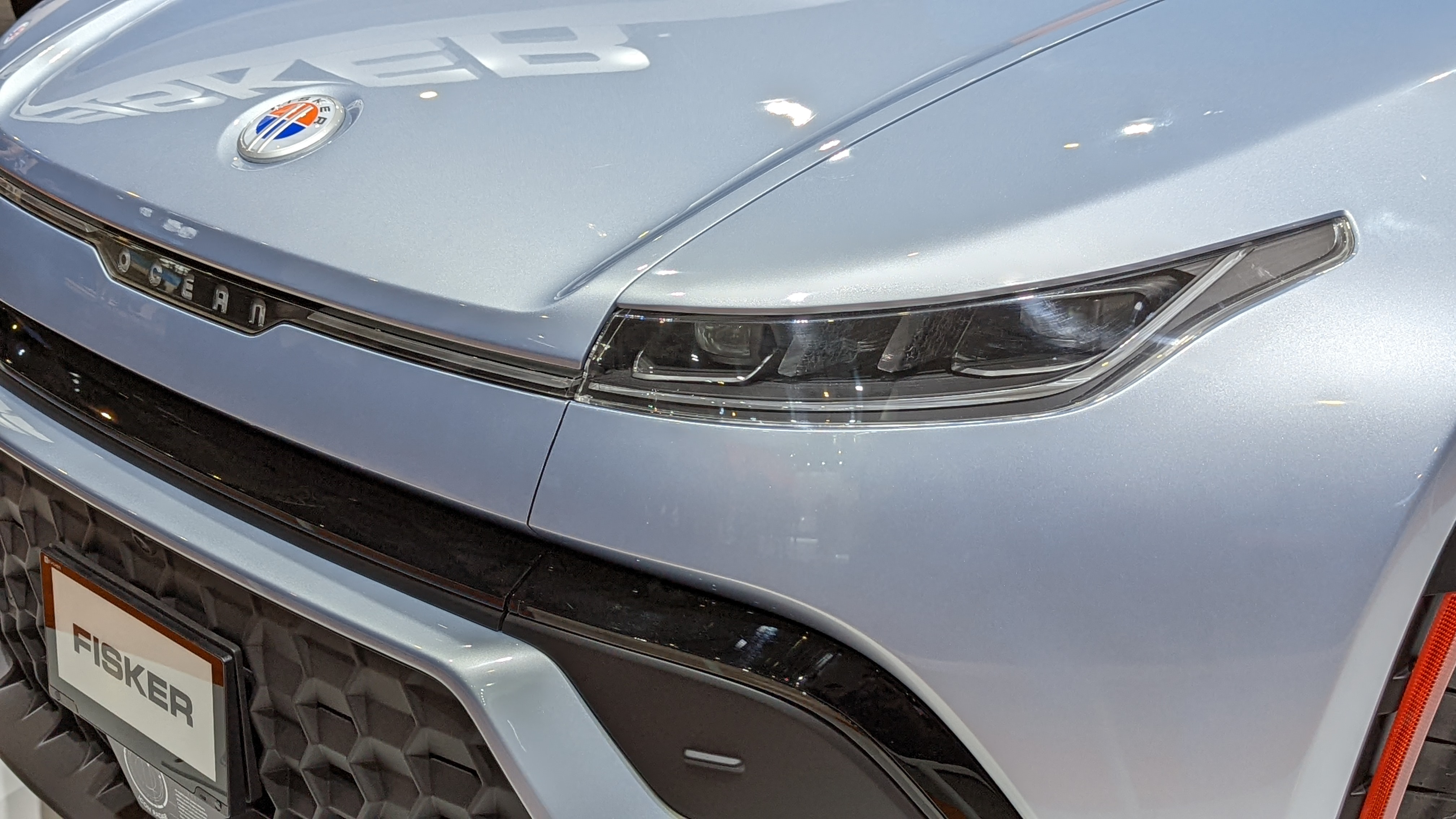
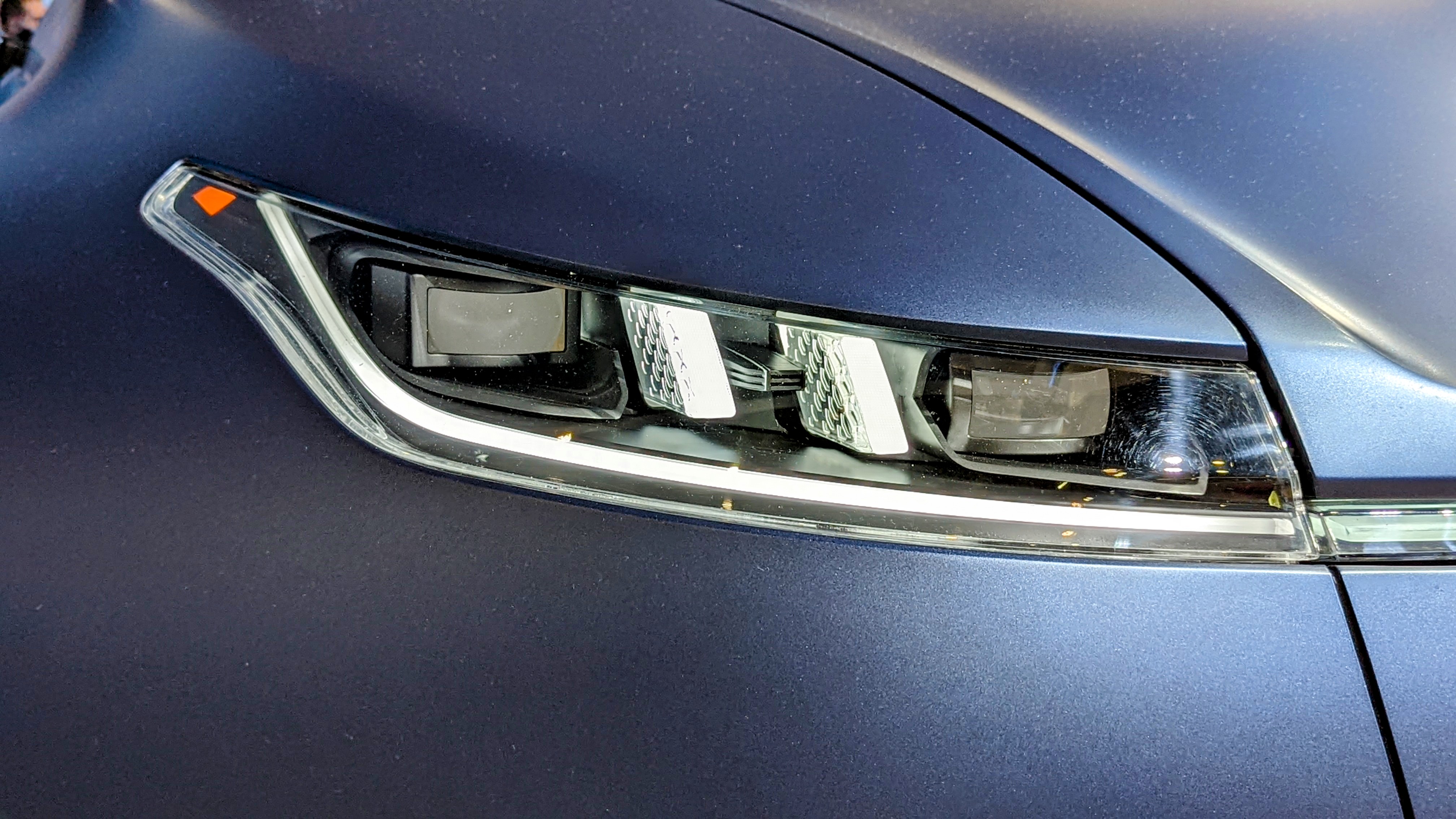
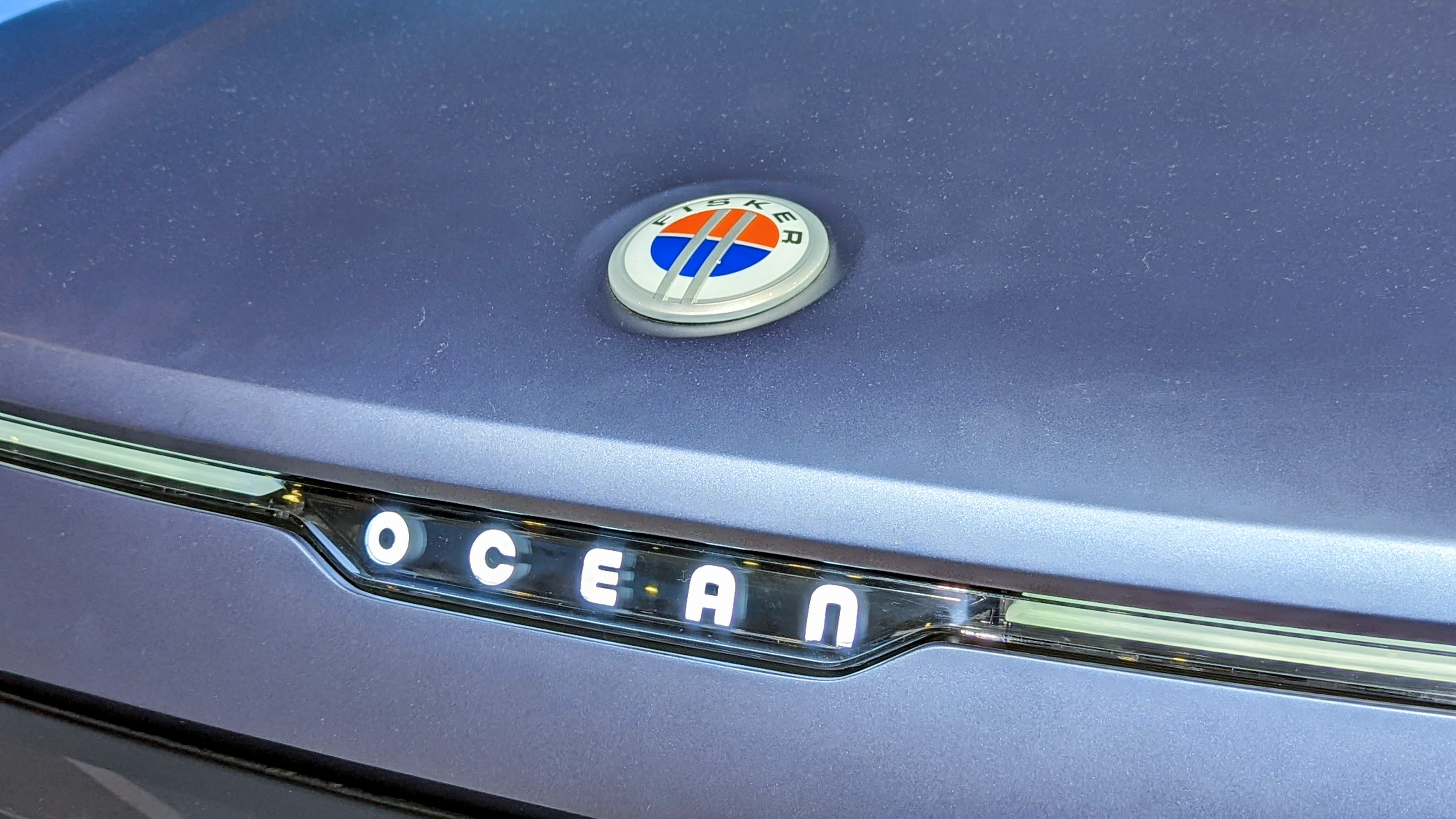
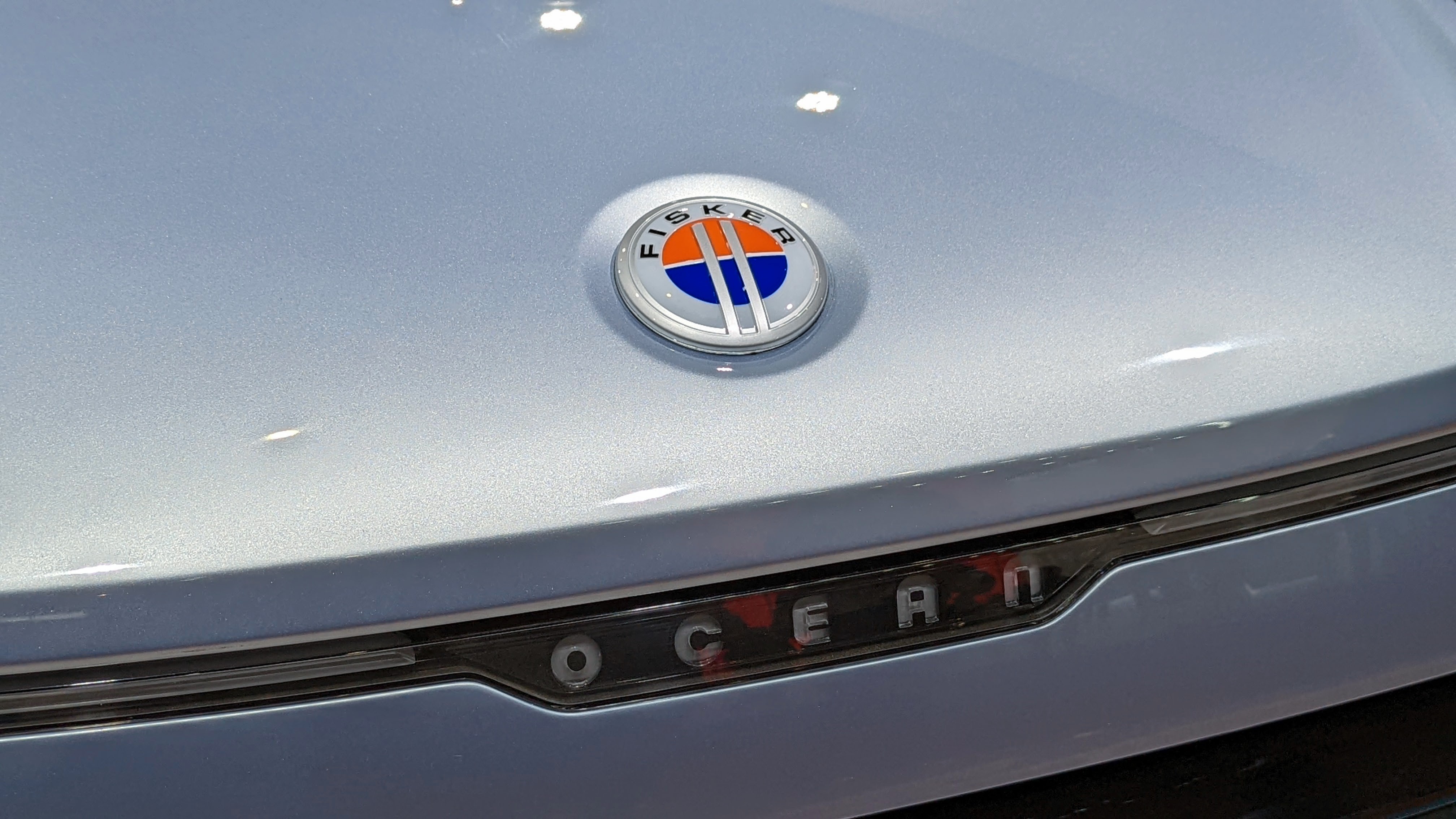
It features a rotating center display
Despite the Ocean being on static display at Fisker's booth, we were allowed to sit in it for a few minutes. Sadly, none of the screens and controls were operational, but the driver's seat is comfortable and – like in other EV-only platforms – the interior is extremely spacious.
What really stands out inside the Ocean is the massive 17.1-inch 21:9 aspect ratio touchscreen which can pivot from portrait mode when driving to landscape mode when relaxing.
Once in the driver's seat, you're greeted by a two-spoke steering wheel with Model 3-like scroll wheels and stalks (indicators and wipers on the left, gear selector on the right).
But unlike Tesla's offering, the Ocean features a few traditional buttons and switches for the headlights, parking brake, side mirror adjustments, and basic climate functionality – although the latter controls (below the center screen) appeared to be a 3D-printed mockup.
Like the Mustang Mach-E, the Ocean features a long and narrow rectangular instrument display affixed to the dashboard. There's also a driver monitoring camera in a pod at the bottom of the left A pillar (and presumably the right A pillar in future RHD cars).
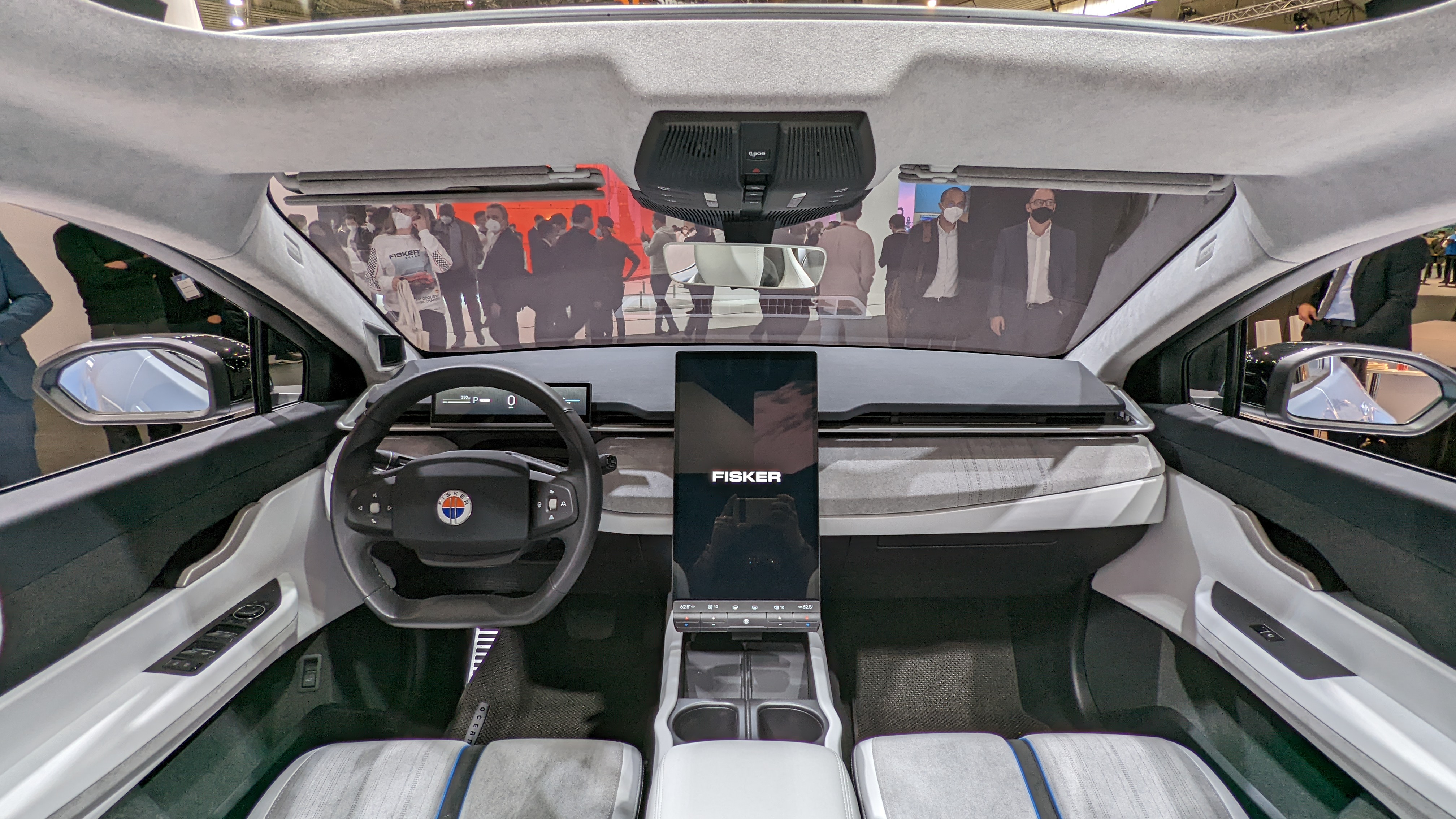
While we didn't notice any (obvious) USB ports for charging anywhere, there appears to be two generously-sized Qi-compatible wireless charging pads in the center console.
Other fun details include a vertical blue stripe in the middle of each seat and the word "power" embossed on the side of the door sills (on the edge of the battery pack).
In all, the Ocean's interior seems like a lovely place to be, and certainly feels more premium than some of its competitors, especially for just $37,499. With 25 cu.ft (707L) – 45 cu.ft (1274L) with the seats down – cargo space is also plentiful behind the 40/60 folding rear seats.
Unfortunately, the Ocean doesn't have a frunk (front trunk). Like the Mercedes EQS, the hood (bonnet) is sealed, and can only be opened with tools. Fisker says this is on purpose, and mostly to save cost.
The reasoning here is that there's plenty of space in the trunk (boot), and while there is room for a few extra cubic feet of storage in front, a sealed hood avoids the need for hinges, a latch, gas struts, a light, a tub, and trim pieces. Fair.
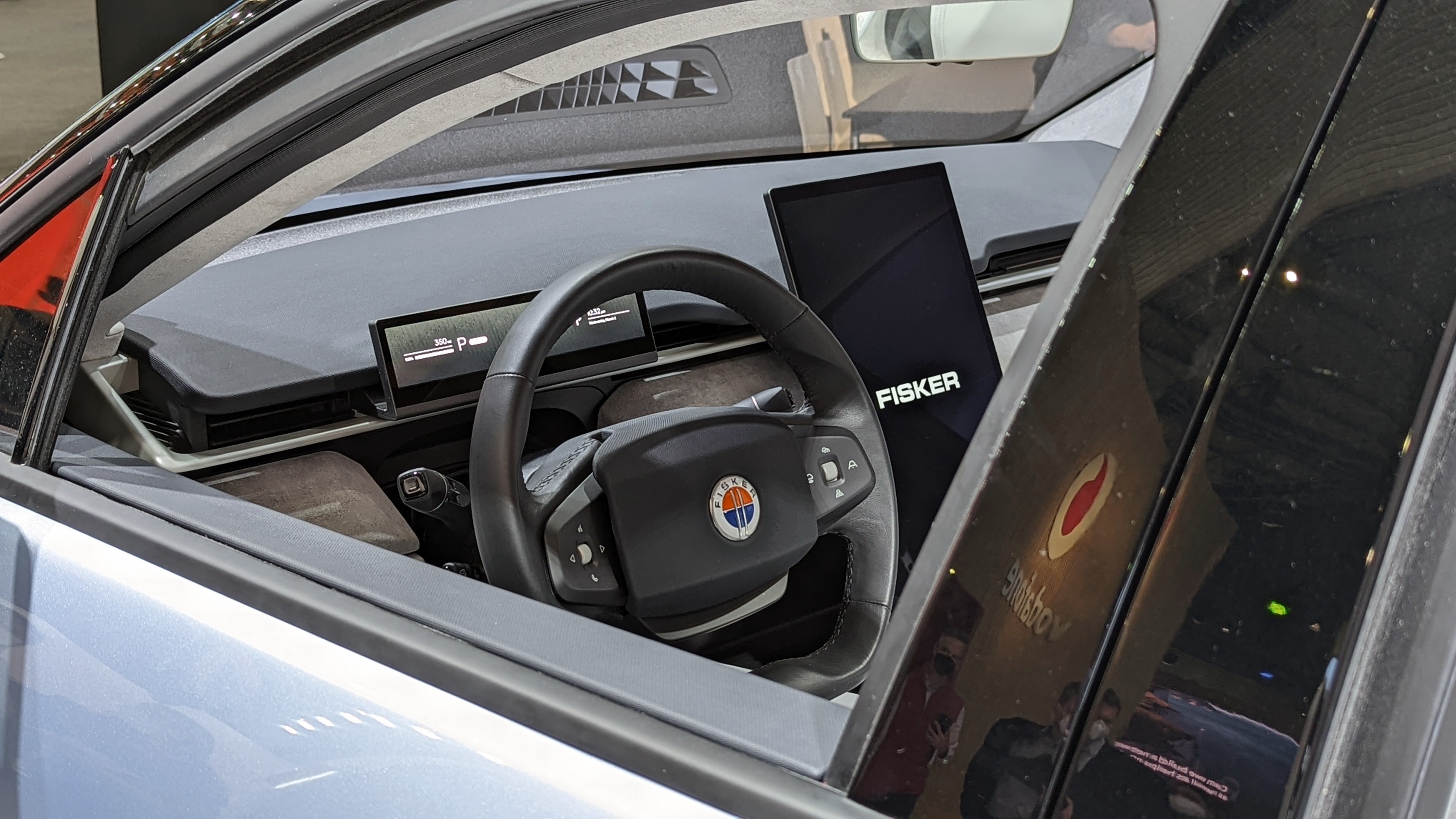
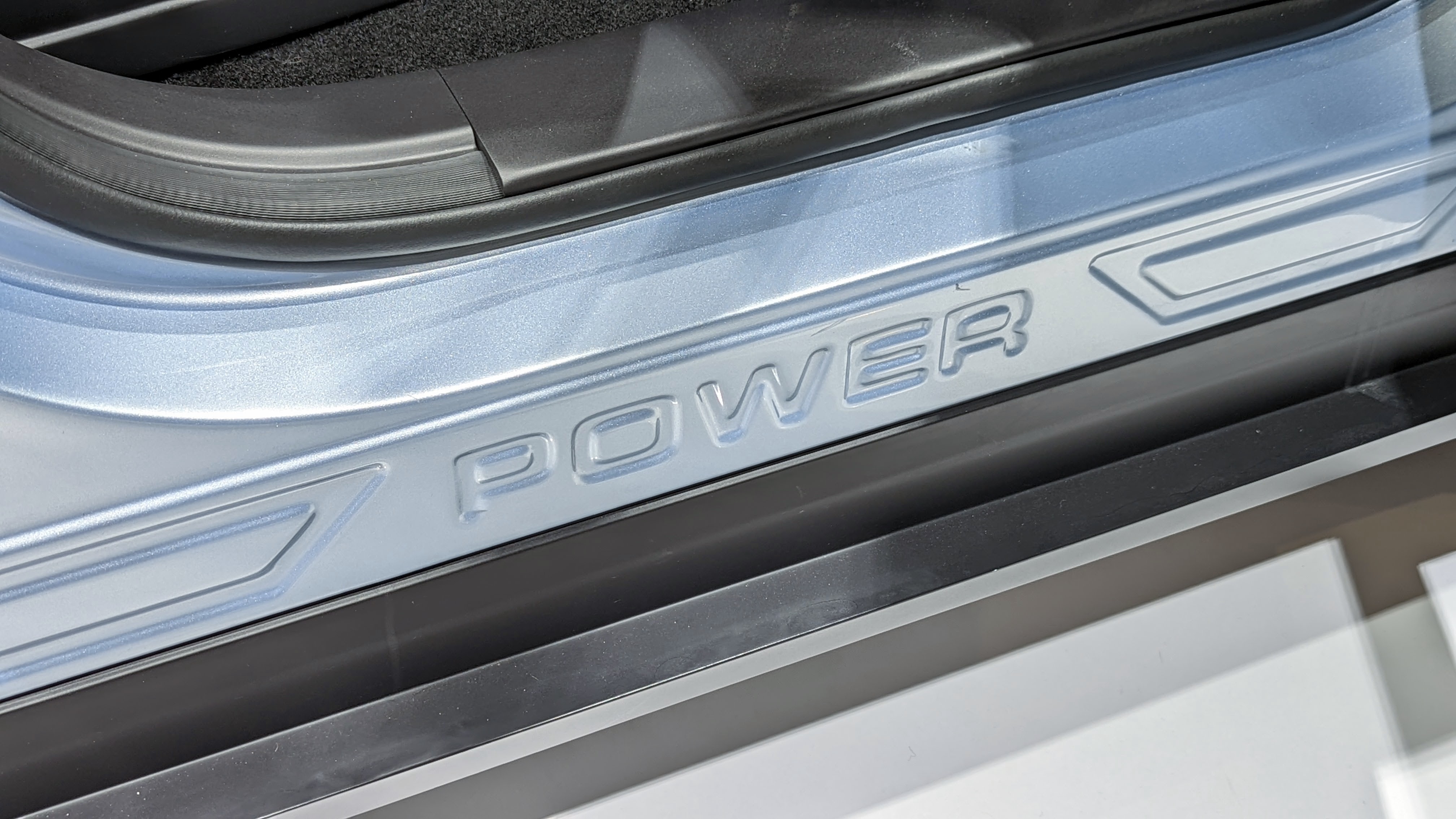
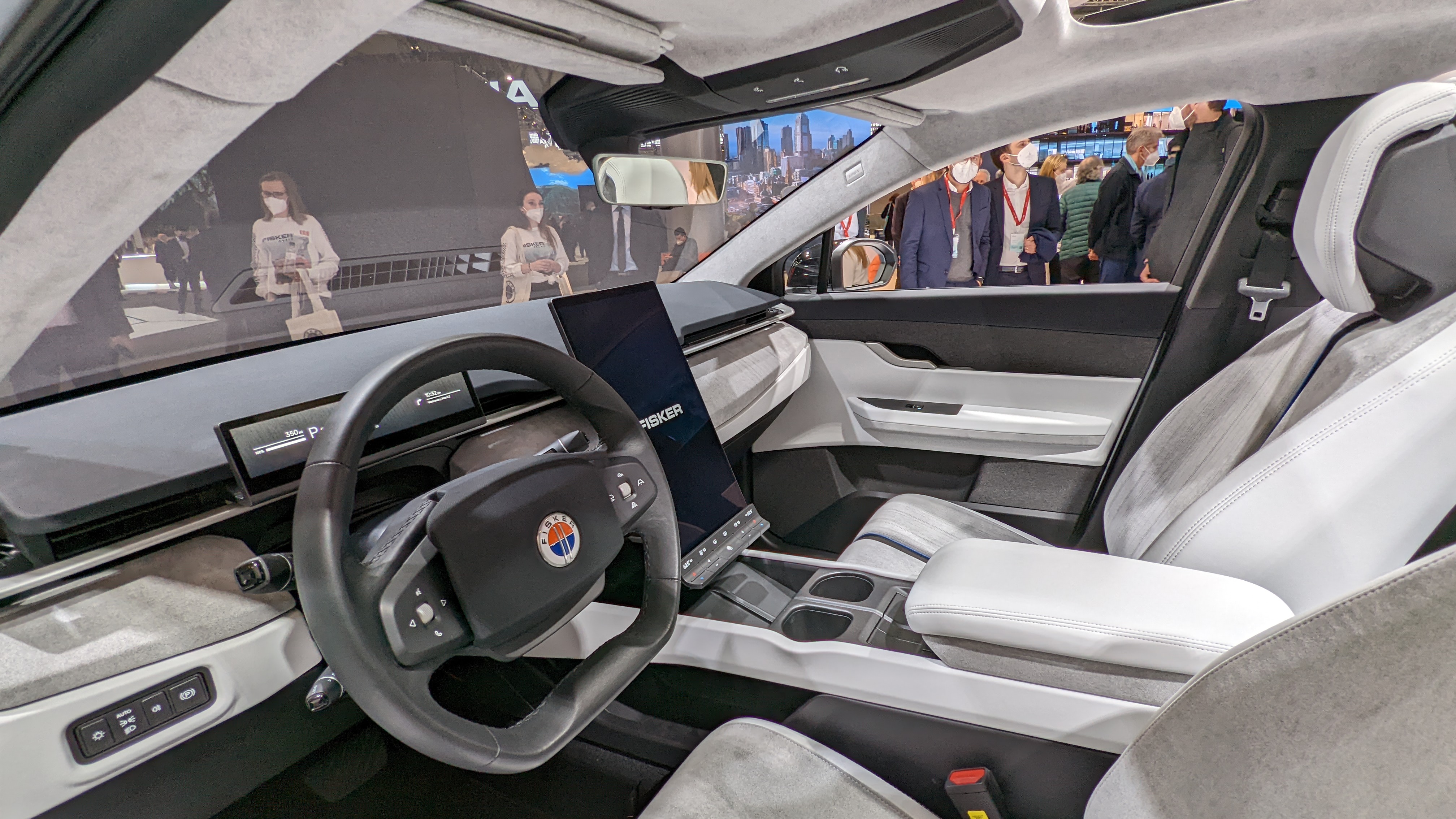
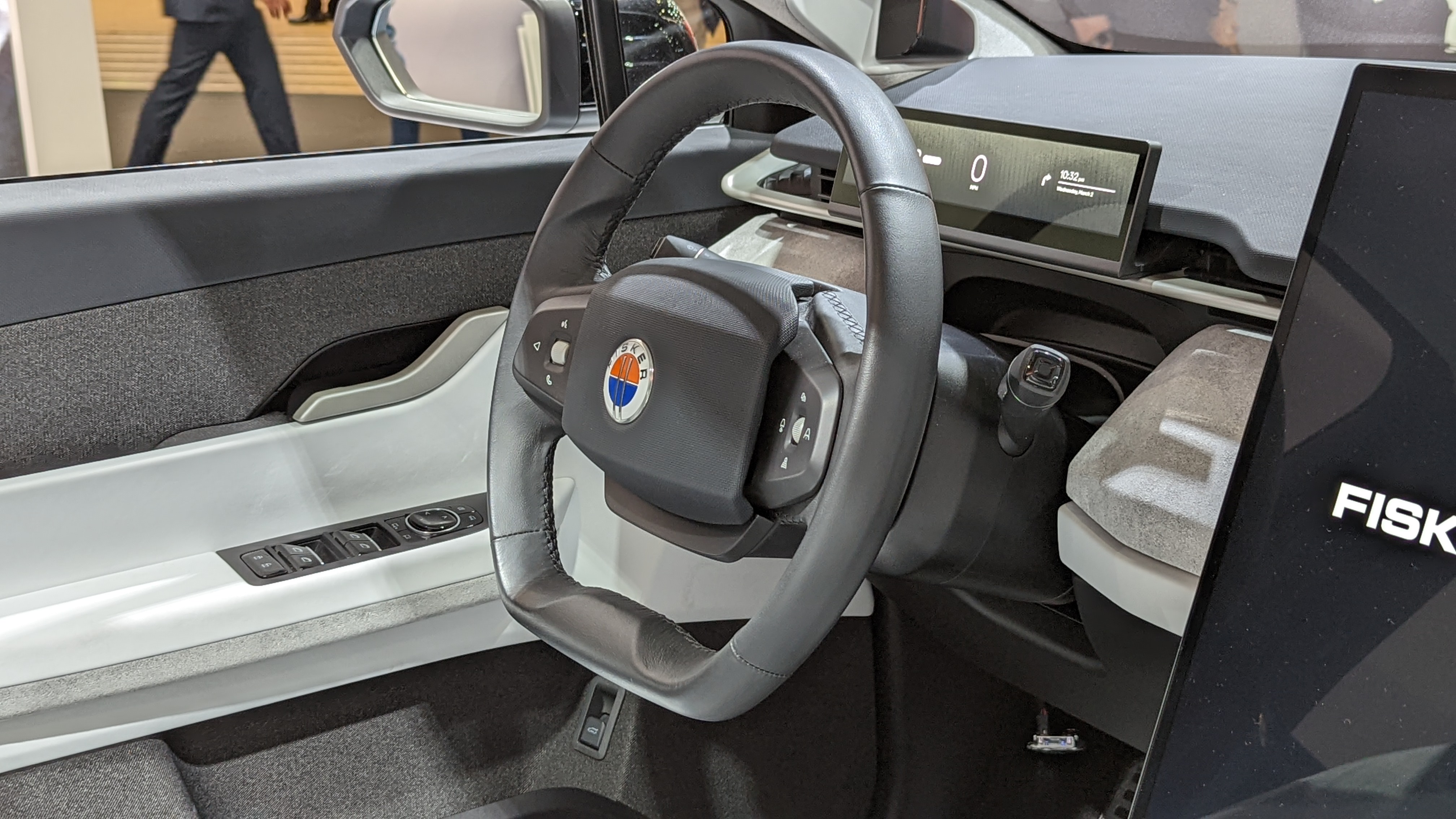
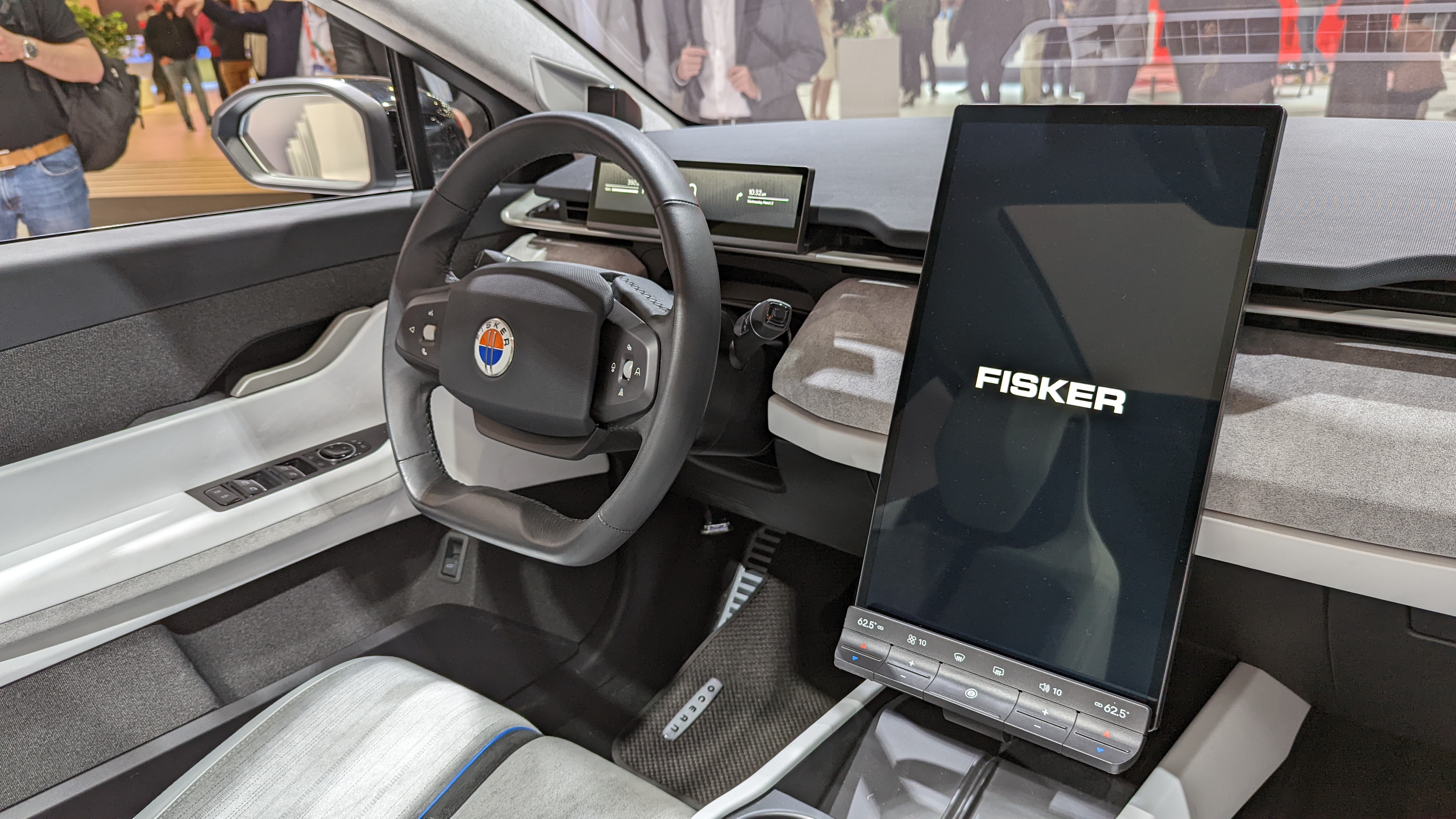
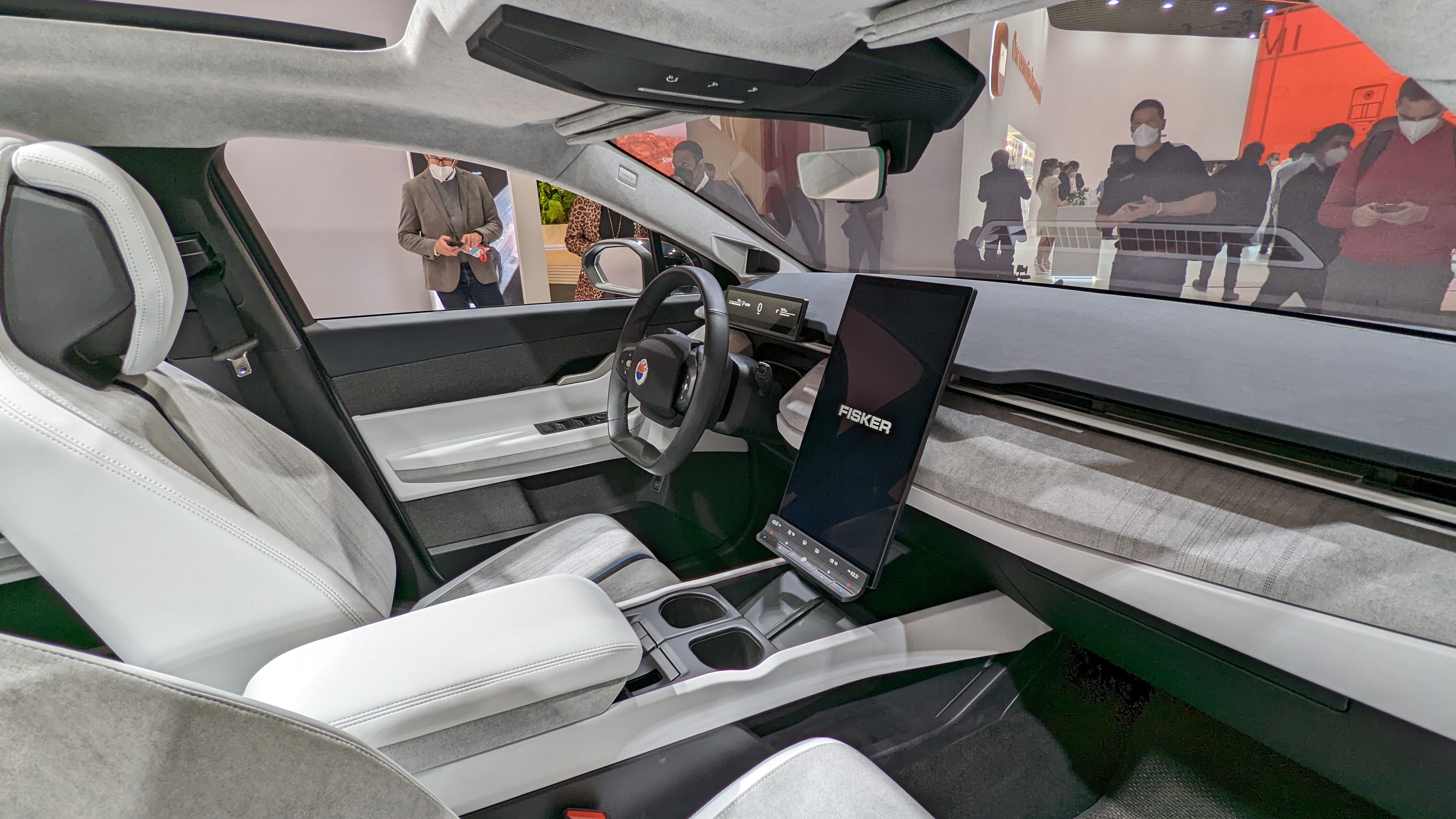
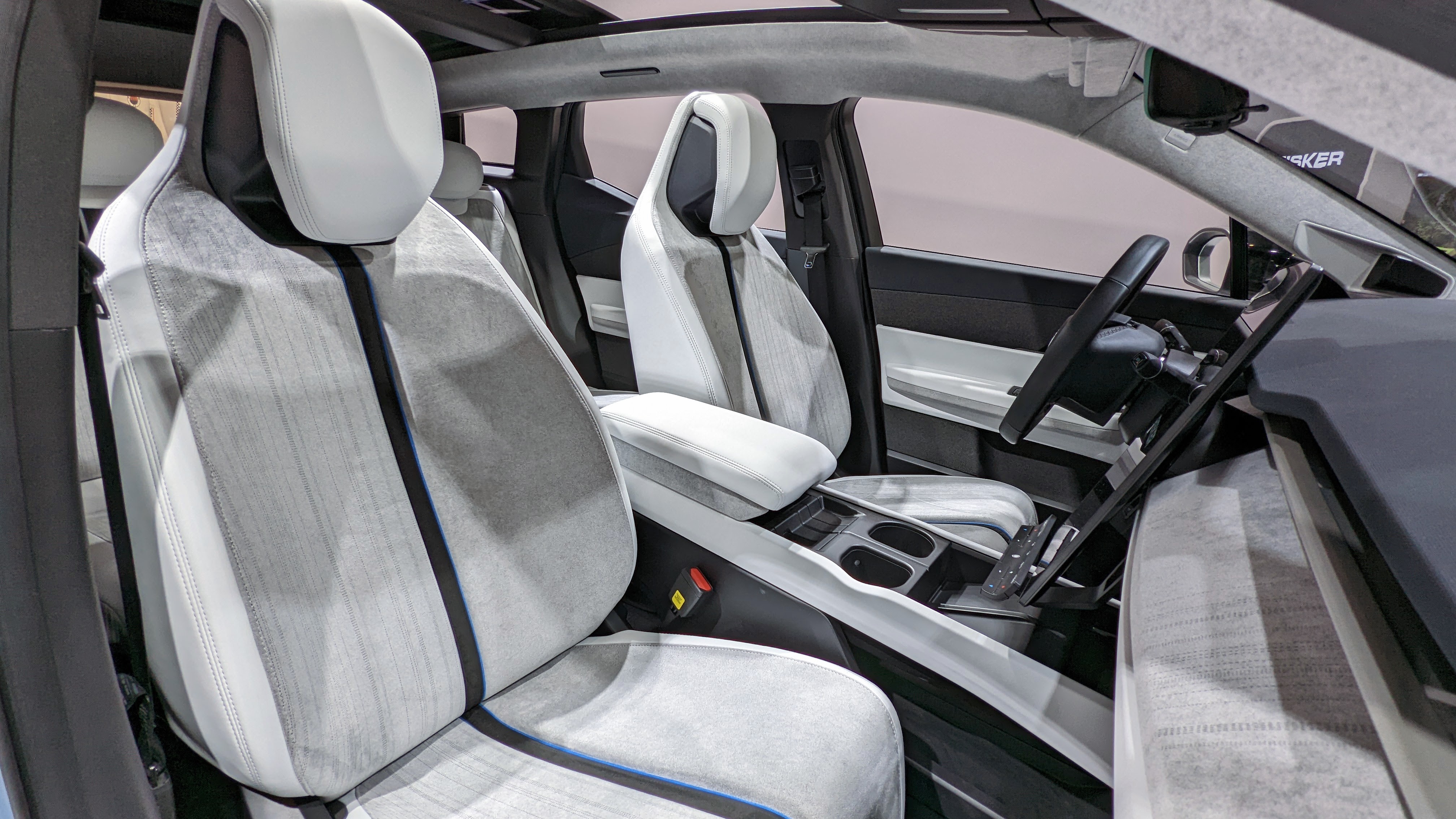
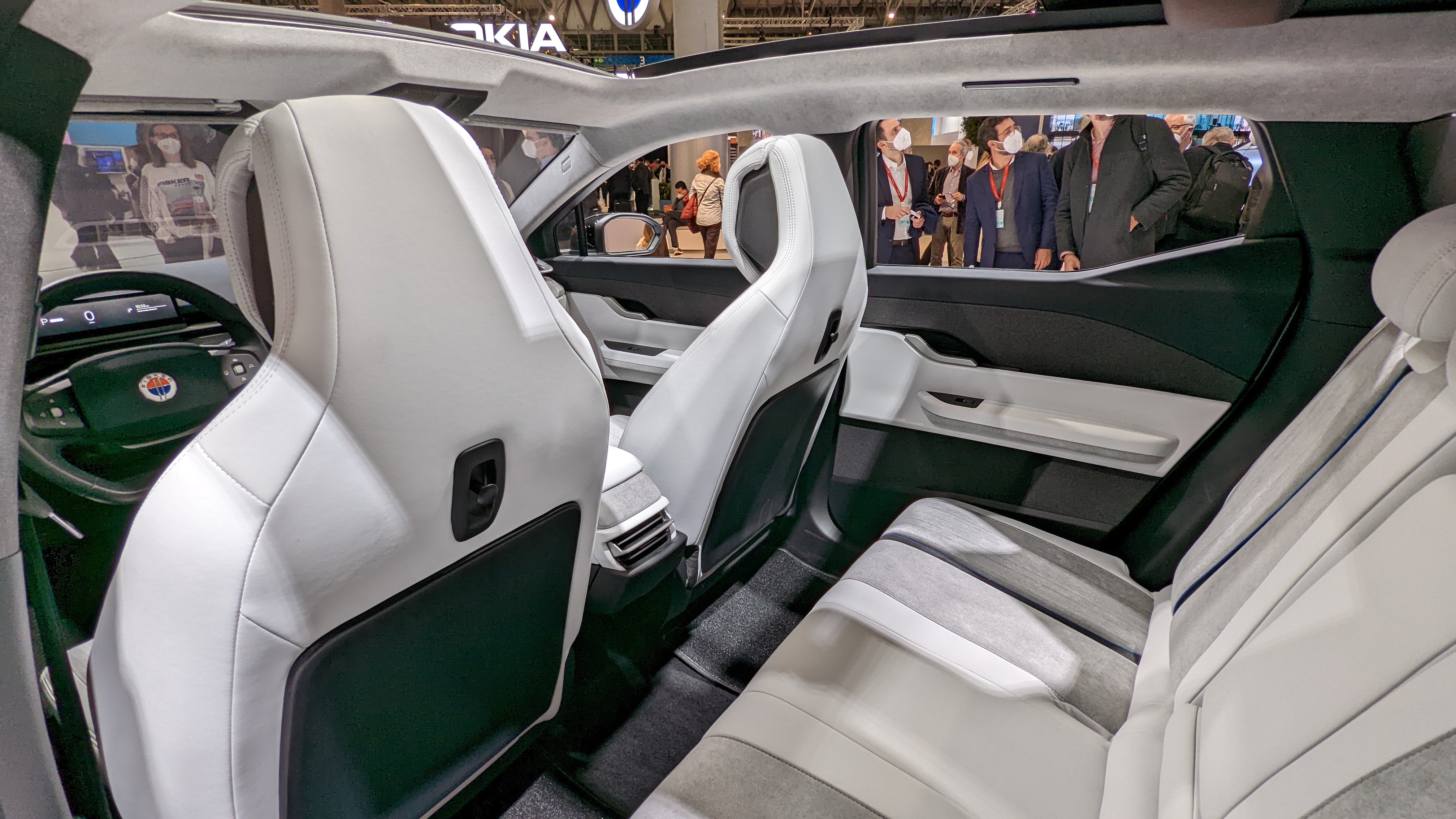
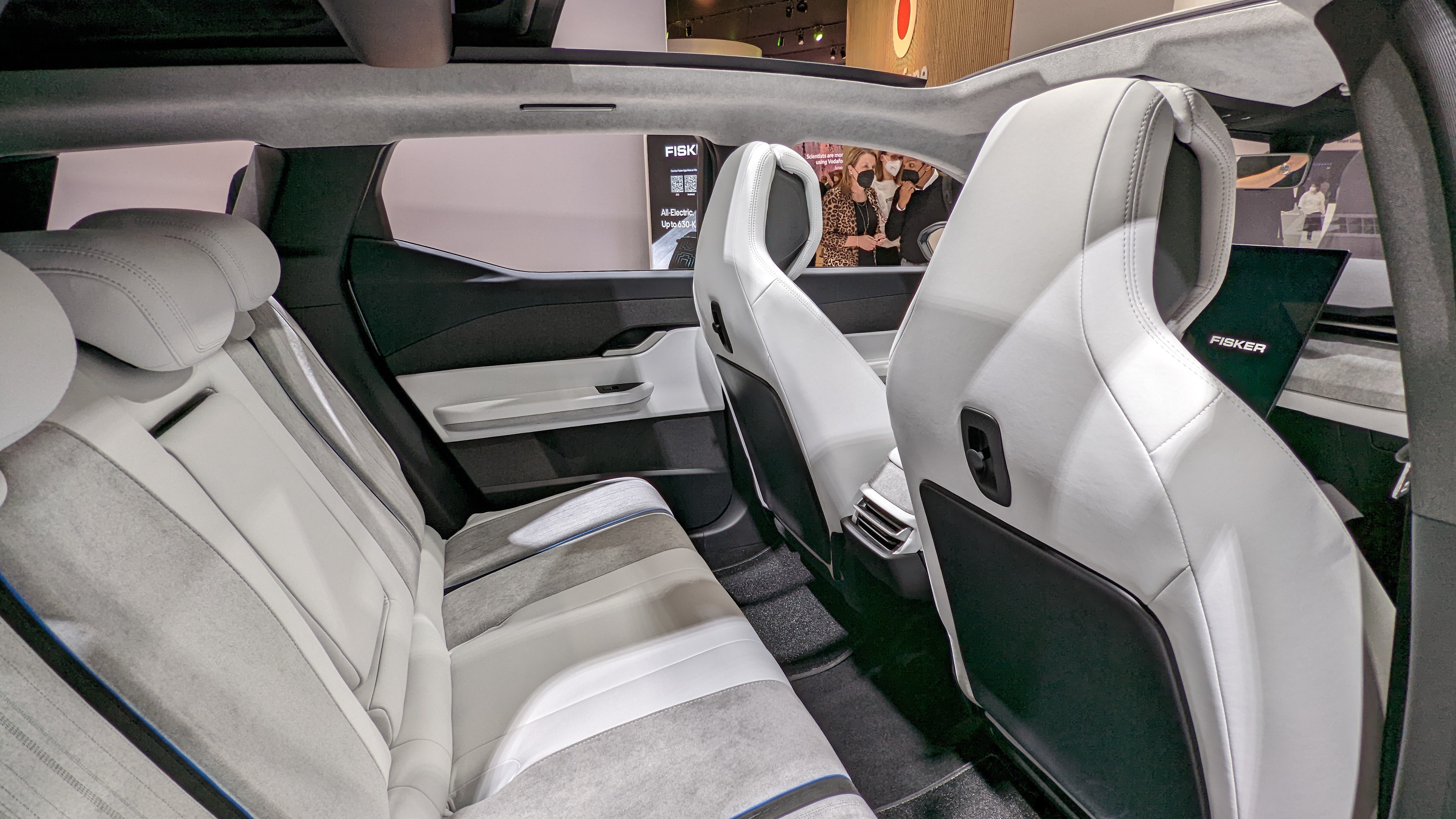
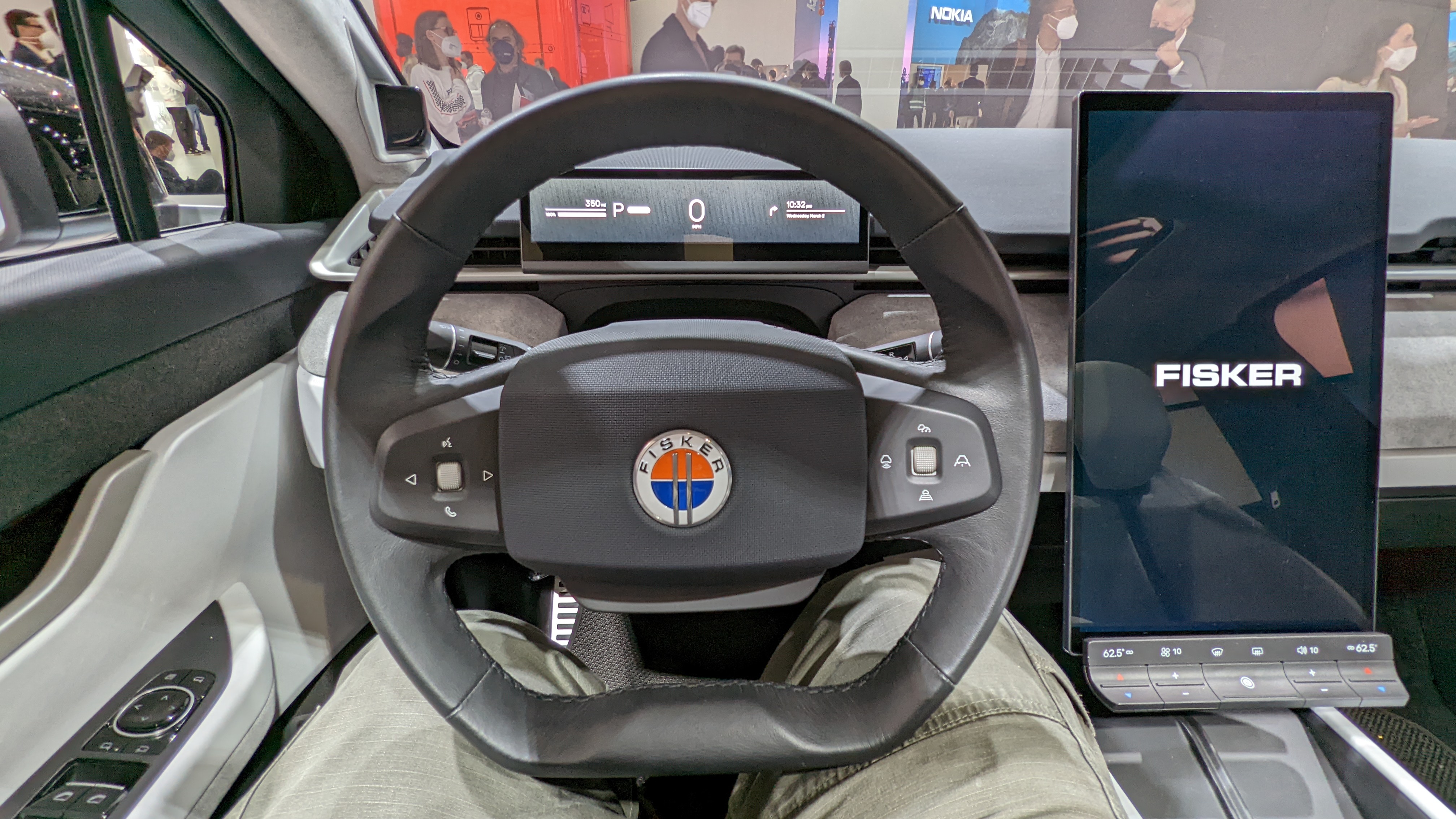
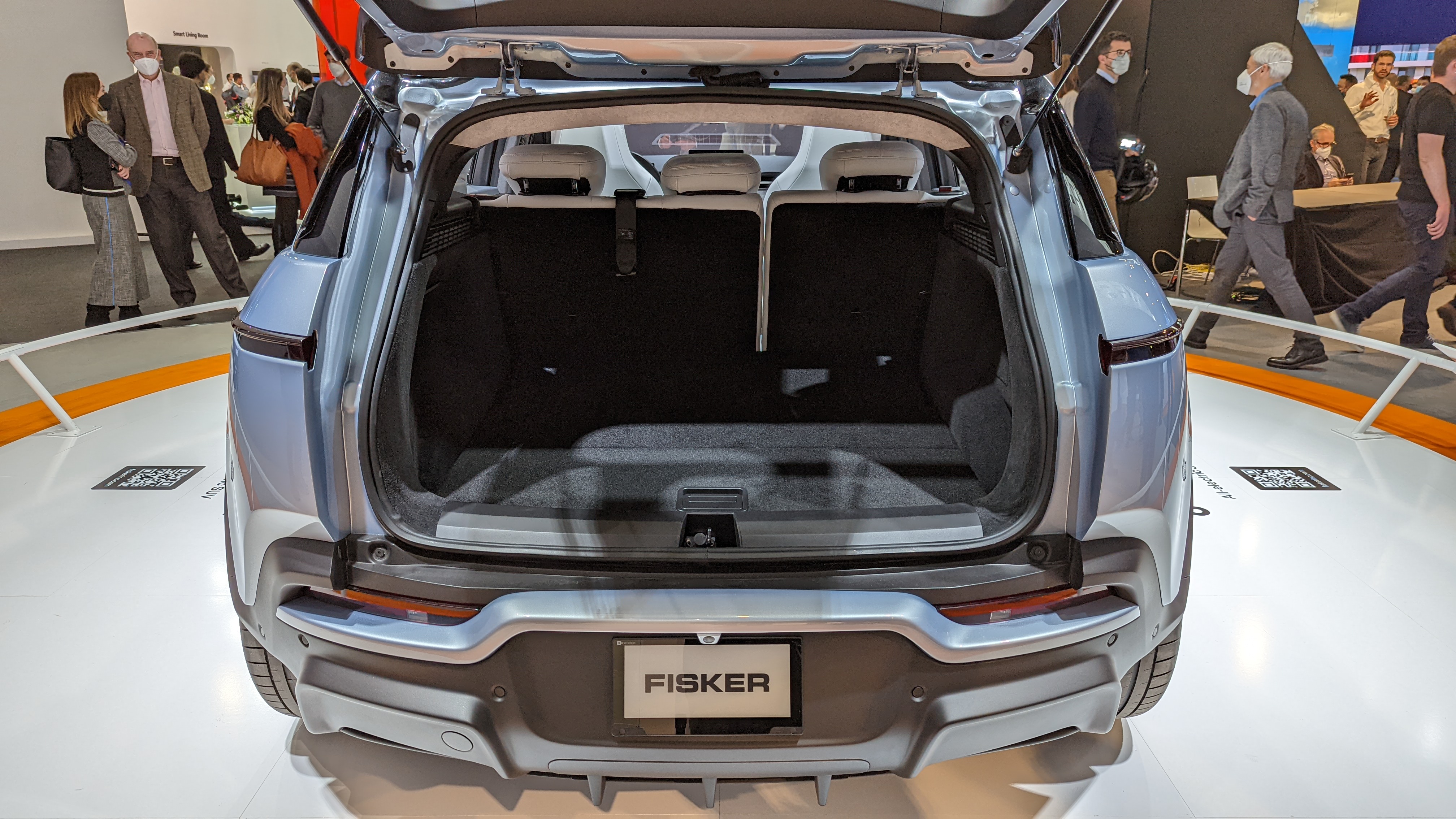
It mixes high tech with comfort
When it comes to tech, the Ocean checks all the boxes – at least on paper. This includes a comprehensive set of advanced driver assistance (ADAS) and safety features called Fisker Intelligent Pilot, self parking, a 360-degree view, LTE connectivity, over-the-air (OTA) updates, phone-as-a-key, and more.
Obviously, we didn't get a chance to experience any of this, so you'll have to wait until we actually test this EV to get a more in-depth report.
The Ocean also packs a ton of creature comforts like dual-zone climate, heated front and rear seats, a heated steering wheel, and an immersive audio system called Fisker Hypersound.
Limo Mode – standard on the Extreme / One trims – includes an additional rear touchscreen for climate control plus power reclining rear seats. There are three drive modes (Earth, Fun, Hyper) on the Extreme / One and Ultra trims, and two (Earth, Fun) on the Sport trim.

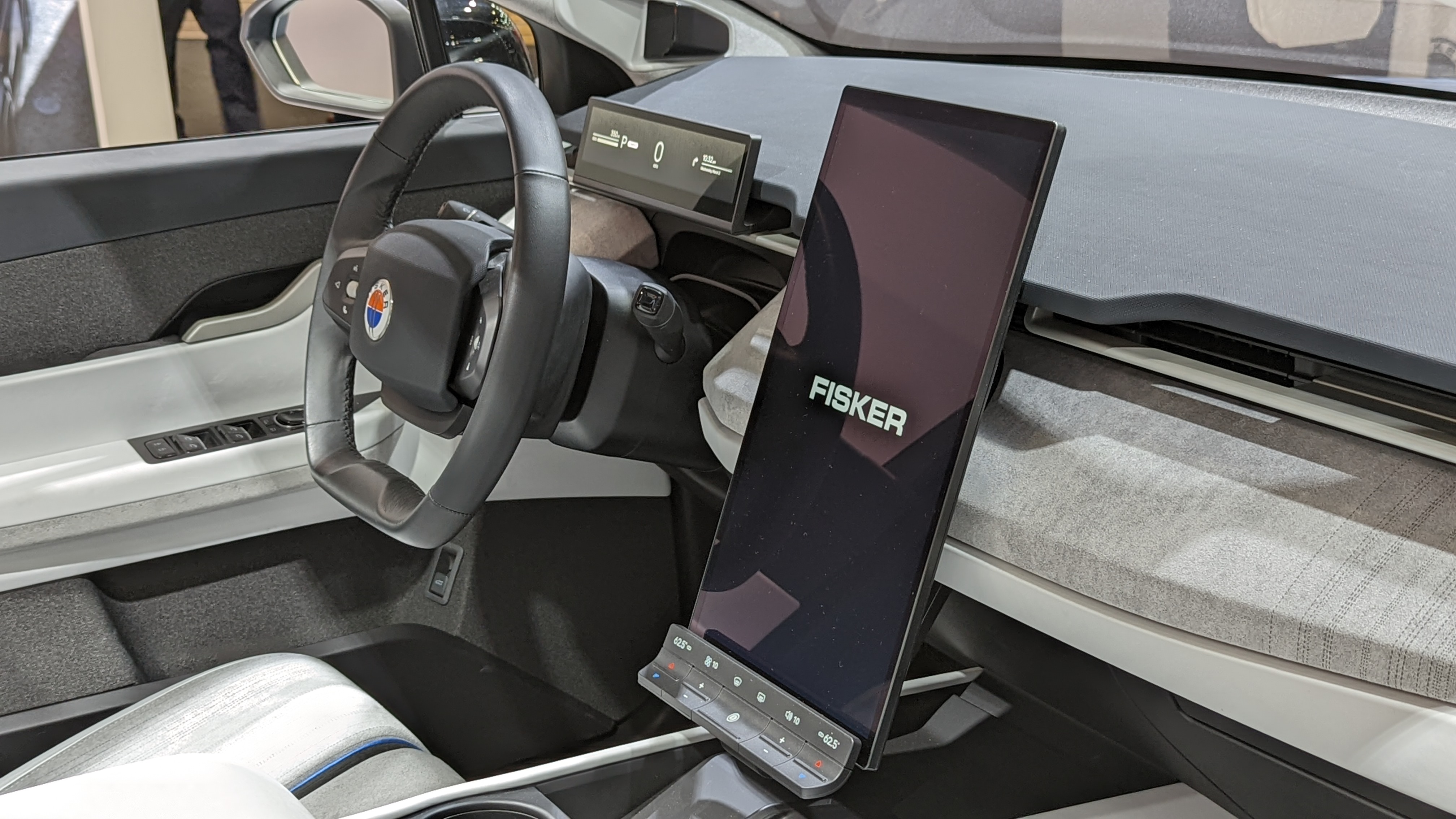
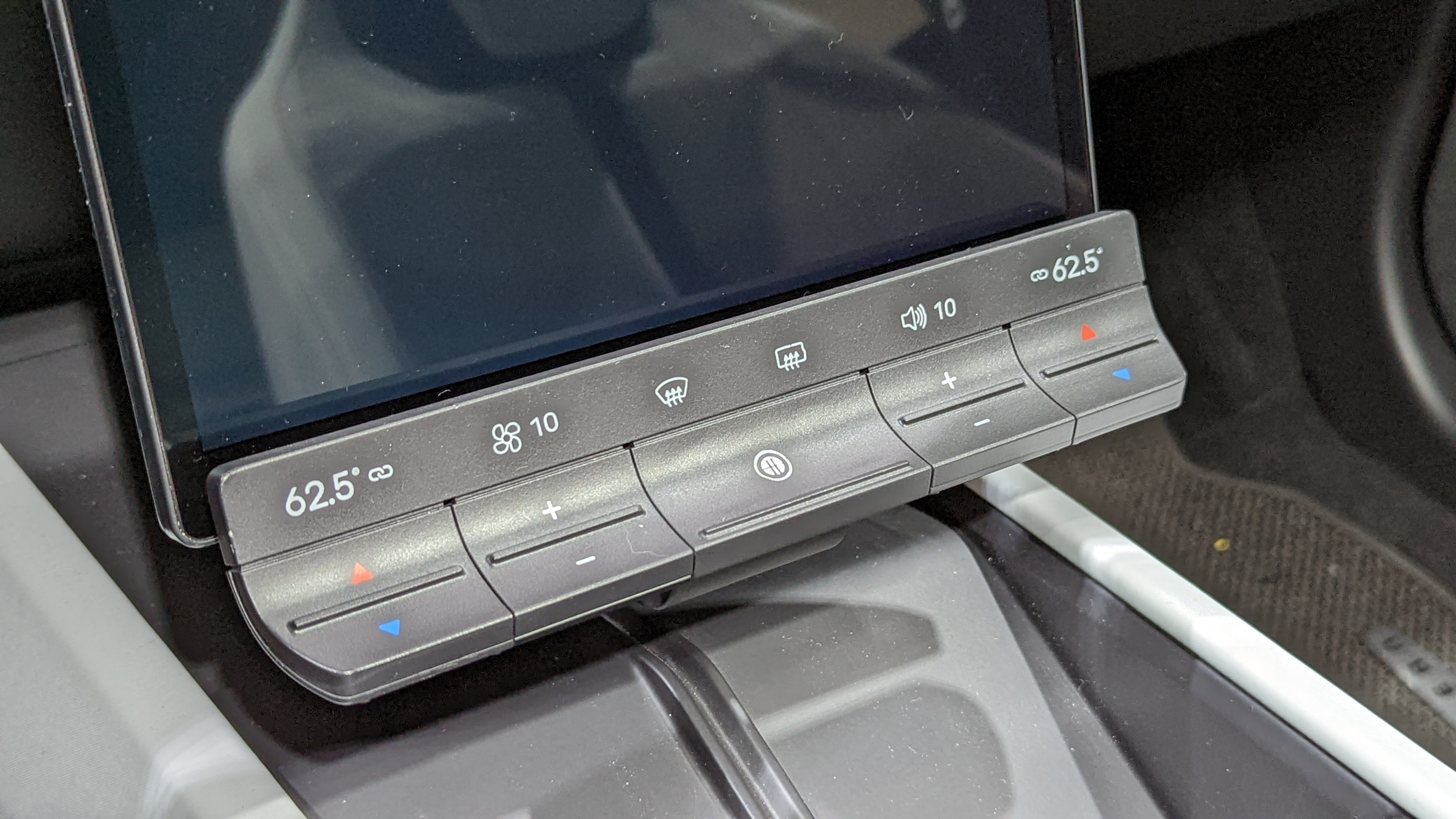
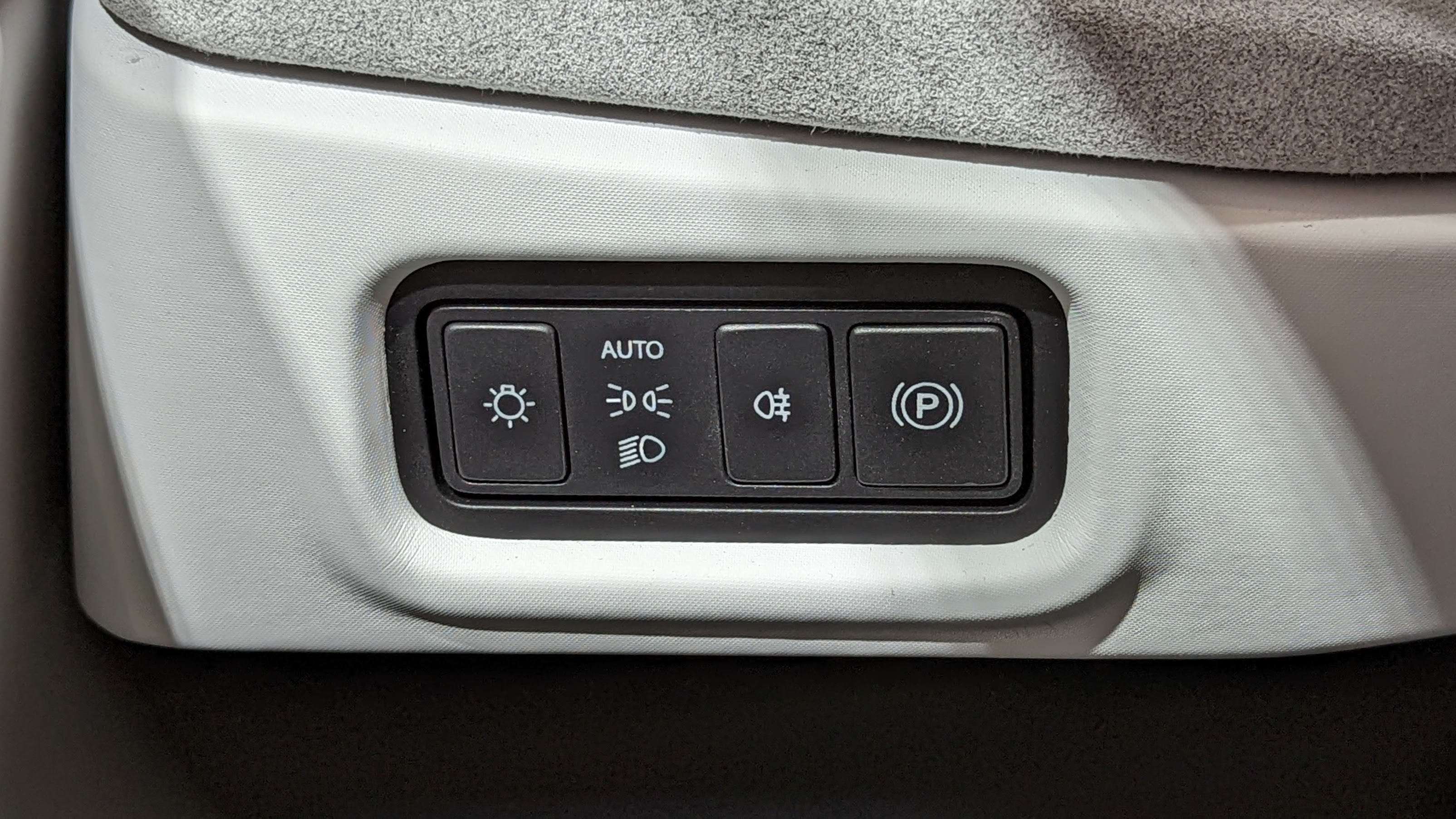
Overall, the Ocean is shaping up to be an interesting and well rounded EV, with impressive specs and features.
The $37,499 starting price (before incentives) delivers solid value, and Fisker even plans to offer a maintenance-included lease starting at $379 per month (with $2,999 down).
While the SUV we saw in Barcelona wasn't quite production ready, Magna is a manufacturing powerhouse, so it's likely Fisker will meet its production goals.
We look forward to seeing how things develop with the Ocean in the next few months, so stay tuned for our first drive and review.

Myriam Joire (tnkgrl) was born wearing combat boots and holding a keyboard. Moments later she picked up a soldering iron. On weekends, she rally-raced with her father. She's been stomping, typing, hacking, and driving ever since. After spending years being a code-monkey in the video game industry, she joined Engadget as Senior Mobile Editor and later Pebble as Chief Evangelist. Today she hosts the weekly Mobile Tech Podcast, makes videos on YouTube, writes about tech and cars for TechRadar and other major publications, and advises startups on product/media strategy. She's based in San Francisco.